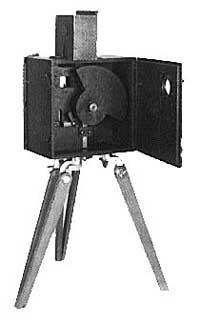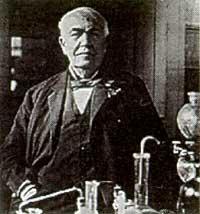Cinematograph or photography when it became cinema
2001/03/01 Urresti, Igor - Elhuyar Zientziaren Komunikazioa Iturria: Elhuyar aldizkaria
But it was not so when nine months later the first public presentation was held at the Le Grand Café in Paris. The public shouted when they saw the train arrive at "La Ciotat" station. It was the impression that the giant train came on the screen face to face!
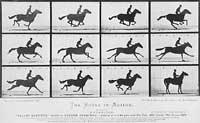
From there we know the successes... add sound, cinemascope, dolby, THX, etc. But how did the whole story begin? A bet opened the history of cinema. Leland Stanford, former governor of California, founder of the university of the same name, made a bet. Stanford was a gentleman who believes that there is a time when the horse that will jog does not touch ground. To clarify the debate, he hired Eadweard Muybridge and offered his favorite Occident horse to rehearse. Mudbridge, in the course of the horse, placed 12 cross chambers and other white screens on the other side. Fine threads were placed between the camera and the screen, and as the horse passed, he pulled them and each camera took a picture. This confirms that there is a time when the horse does not touch the ground.
But Muybridge wasn't there. In October 1878 he published his photographs in the journal Scientific American and in 1879 he mounted them on a strobe disc and lit them with a 'magic lantern', invented by Kirscher. The permanence of the images in the retina made the horse look in motion to everyone's surprise. His work was the basis of cinema, as it was the first time the light movement broke down in the photographic sequence.
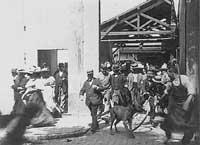
Muybridge conducted hundreds of research and began lecturing in Europe. Thus, G.V. Frenchman Marey invented the tool to take consecutive photos and called it a photographic gun.
At that time, Thomas Alva Edison heard a lecture from Muybridge and thought that motion photography could have a future. In 1988 he tried to record photos on wax cylinders used to make phonographic recordings. W. His partner Dickson took another step when he started using celluloid films created by George Eastman. The celluloid was hard but flexible and could be stored in long rolls. They themselves invented the 35 mm film and the dental system with which they pull forward the films (which we continue to use today). The advantage was great as many photos were needed to get the move. The device for making the films was called a quinetographer and films of 15 seconds were screened. However, thinking that the photographs that had movement would have little success, the tool created to view the photos, the quinetoscope, was not suitable to show the images in public, that is, the images were not projected on screen. The quinetoscope, published in April 1894, had a space reserved for one person.
Edison saw so little future to quinetoscopy that he had not applied for copyright for Europe either. And based on the Edison machine, the brothers Louis and Auguste Lumière developed a tool that included a camera and a portable projector at the same time: the cinematograph.
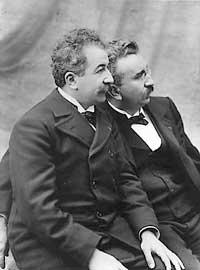
The cinematographer used the flexible band developed by Edison and Dickson and, according to the patent of the Lumière brothers, was "a tool for performing and displaying chronophotographic prints". It was first presented 106 years ago, on March 22, 1985.
On December 28, 1895, in the basement of the Le Grand Café on the Boulevard de los Capuchinos in Paris, 10 short films were screened, which did not last 20 minutes. They were composed of everyday images: Departure of workers from the Lumière family factory, arrival of the train to the aforementioned La Ciotat train station, etc. This is the first short films that were screened publicly paying the entrance, and it can be said that today's cinema began then.

Gai honi buruzko eduki gehiago
Elhuyarrek garatutako teknologia




